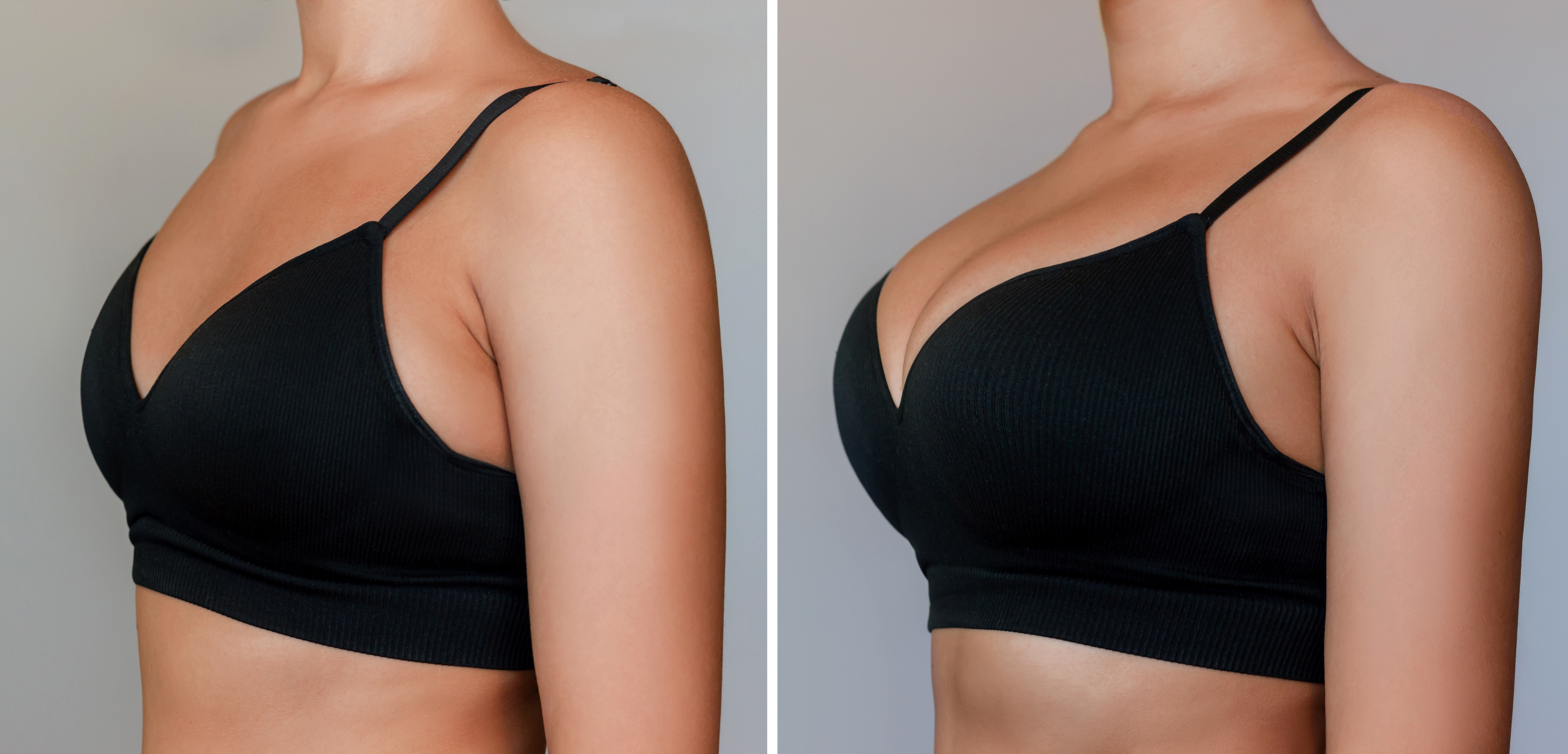Breast augmentation, also known as augmentation mammoplasty, is a surgical procedure to help improve the appearance, size and shape of your breasts. Pregnancy, changes in body weight, and aging can affect the size and shape of your breasts. Breasts may also be underdeveloped, disproportionate to your body, or different sizes. All of these aesthetic concerns may be addressed with a breast augmentation or a combination of cosmetic breast procedures.

Schedule a Consultation
Click HereBreast Augmentation Surgery Process
Before Surgery
You will first meet with one of our Cosmetic Consultants who will guide you through your entire plastic surgery journey. Our Cosmetic Consultant will take your imaging photos with our Vectra camera that will allow you to review, decide and deliver exciting possibilities of your anticipated procedure using our Sculptor 3D software:
- Meet with the surgeon of your choice to ask questions.
- Review your health history and breast augmentation goals to determine if a breast augmentation, or a combination of cosmetic breast surgeries, is right for you.
- Discuss fees/financing and schedule surgery with one of our surgery coordinators.
Computerized imaging is available for our cosmetic surgical procedures.
Day of Surgery
Your breast augmentation will be performed in our fully accredited in-office surgical suite or in a same day surgical facility as an outpatient procedure.
IV sedation with local anesthesia is normally used.
A breast augmentation typically takes approximately 1 hour.
Recovery
After your breast augmentation:
You can expect to be in recovery from 1 to 2 hours.
You may experience temporary discomfort and swelling after your procedure.
Women will typically return to work several days after surgery.
Regular activities may be resumed 4 weeks after surgery.
Watch
Are Breast Implants placed above or below the muscle? with Dr. Waldrop

